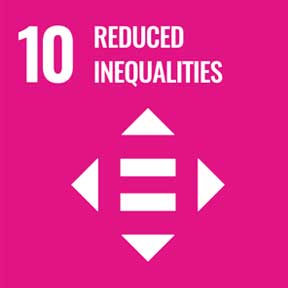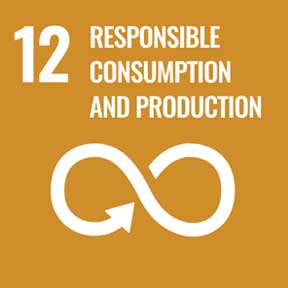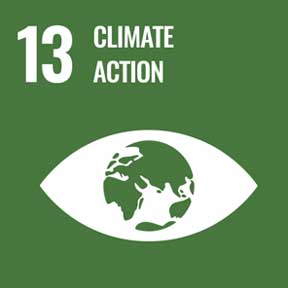Prairies Economic Development Canada’s 2024–2025 Departmental Sustainable Development Strategy Report
View the print-friendly version: PDF (1.27 MB)
Catalogue No.: Iu98-1/2E-PDF
ISSN: 2816-8828
Prairies Economic Development Canada
1500-9700 Jasper Ave.
Edmonton AB T5J 4H7
Telephone: 780-495-4164
Toll Free: 1-888-338-3978
This document is available on the Prairies Economic Development Canada website at https://canada.ca/en/prairies-economic-development.html
© His Majesty the King in Right of Canada,
represented by the Minister of Northern Affairs, Minister responsible for Prairies Economic Development Canada and Minister responsible for the Canadian Northern Economic Development Agency
Introduction to the 2024 to 2025 Departmental Sustainable Development Strategy Report
The 2022 to 2026 Federal Sustainable Development Strategy (FSDS) presents the Government of Canada’s sustainable development goals and targets, as required by the Federal Sustainable Development Act. This is the first FSDS to be framed using the 17 Sustainable Development Goals (SDGs) of the United Nations 2030 Agenda and provides a balanced view of the environmental, social, and economic dimensions of sustainable development.
In keeping with the purpose of the Act, to make decision-making related to sustainable development more transparent and accountable to Parliament, Prairies Economic Development Canada (PrairiesCan) supports the goals laid out in the FSDS through the activities described in PrairiesCan’s 2023 to 2027 Departmental Sustainable Development Strategy (DSDS). This Report provides a report on progress related to PrairiesCan’s DSDS in the fiscal year 2024 to 2025.
The Federal Sustainable Development Act also sets out 7 principles that must be considered in the development of the FSDS as well as DSDSs. These basic principles have been considered and incorporated in PrairiesCan’s DSDS and 2024 to 2025 DSDS Report.
To promote coordinated action on sustainable development across the Government of Canada, PrairiesCan’s departmental strategy reports on Canada’s progress towards implementing the 2030 Agenda and advancing the SDGs, supported by the Global Indicator Framework (GIF) and Canadian Indicator Framework (CIF) targets and indicators. The Report also now captures progress on SDG initiatives that fall outside the scope of the FSDS.
Commitments for Prairies Economic Development Canada




Goal 8: Encourage inclusive and sustainable economic growth in Canada

FSDS context
Goal 8 in the 2022 to 2026 FSDS aims to increase competitiveness and create a more sustainable and diverse economy, including growing and supporting clean technologyEndnote 1 and other emerging sectors. PrairiesCan promotes inclusive and sustainable growth in the Prairie economy by enhancing innovation and business competitiveness, making investments in the clean economy, and advancing inclusive economic growth.
The department makes strategic investments in key sectors, including clean technology and clean resourcesEndnote 2. For example, in the 2024 to 2025 fiscal year, PrairiesCan made investments in the following projects across the Prairies:
- Calgary, Alberta: The expansion and enhancement of the Energy Transition Centre (ETC), Calgary’s clean technology ecosystem hub, which helps accelerate the commercialization of cleantech startups, attract investment, increase industry adoption of new technologies, and drive Alberta’s leadership in the global energy transition. This investment builds on the successful PrairiesCan-funded ETC pilot.
- Regina, Saskatchewan: Greensense – a platform for identifying precisely where electricity, natural gas, and water are being wasted in buildings – helps to achieve substantial reductions in energy consumption, transforming buildings into sustainable facilities that actively lower their carbon footprint. Supporting AI integration in Greenwave Innovations Inc.’s proprietary Greensense platform will help to further increase its environmental benefits by optimizing renewable energy systems and preventing resource loss through automated gas and water leak detection.
- Winnipeg, Manitoba: NFI Group Inc., a leading independent bus and coach manufacturer and a leader in electric mass mobility solutions, received a contribution from PrairiesCan to expand low and zero-emission transit bus manufacturing in Winnipeg, including charging infrastructure and battery facilities. Financing for the All-Canadian Build facility will allow New Flyer to meet the demand for fully Canadian-built buses while increasing the regional workforce trained in zero-emission heavy equipment manufacturing.
PrairiesCan advances inclusive economic growth in the Prairies through investments supporting the economic participation of underrepresented groups. For instance, in the 2024 to 2025 fiscal year the department made an inclusive economic development investment in the following project:
- Edmonton, Alberta: Black Entrepreneurship Program funding provided to the African Canadian Civic Engagement Council to deliver its ANZA Entrepreneurship Ecosystem Program (ANZA). By incorporating culturally rooted knowledge, ANZA empowers Black youth to cultivate and refine their business concepts, supports them to develop well-structured business plans, and offers guidance to secure loans and launch a business.
Under the Canada Coal Transition Initiative (CCTI) and Canada Coal Transition Infrastructure Fund (CCTI-IF), the department supports skills development, infrastructure investments, and economic diversification in impacted communities transitioning away from coal-fired electricity generation in Alberta and Saskatchewan. Since 2018, both programs have supported 75 projects for a total of $121.6 million. In the 2024 to 2025 fiscal year, PrairiesCan approved funding for 4 projects in Alberta and Saskatchewan for a total of $4.06 million. Projects include:
- Forestburg, Alberta: Supported the first phase of development of the Forestburg Industrial Subdivision, including the design and construction of roadway and utility extensions for water, sanitary sewer, natural gas, electrical power, and internet utilities. This industrial development will help attract new business opportunities and projects to this remote community.
- Estevan, Saskatchewan: Funding for the Southeast Sask Economic Partnership in partnership with the RM of Coalfields and the Village of Roche Percee to upgrade and electrify the Roche Percee Regional Park, a key tourism asset for the region located along the Highway 39 corridor.
Finally, through the Framework to Build a Green Prairie Economy, PrairiesCan and nine other federal departments are increasing federal co-ordination in the delivery of programs and strengthening engagements with regional partners to support sustainable economic development and advance Canada’s environmental ambitions. Examples of PrairiesCan work involving investments with other federal departments on clean growth projects include:
- Calgary, Alberta: Supported the Calgary Airport Authority to construct and equip a new 150,000 square foot aircraft engine maintenance and test facility at the Calgary International Airport (YYC) for the onshoring of maintenance and testing of low-emission engines and aviation fuels.
- Saskatoon, Saskatchewan: Funding to support the Saskatchewan Research Council (SRC) to establish North America’s first commercial processing facility for rare earth metals and develop new rare earth mineral processing technologies for final uses in electric vehicles, wind turbines, electronics, and industrial processes. In addition, the SRC will collaborate with a local educational institution to develop and deliver a training program for Indigenous students to operate the processing equipment.
- Winnipeg, Manitoba: Supported NFI Group’s All-Canadian-Build facility that will see hydrogen and electric fuel cell buses assembled from start-to-finish in Winnipeg.
Target theme
Support for workers and business
Target
By 2026, there are at least 245,000 jobs in the cleantech products sector, an increase from 2019 (Minister of Innovation, Science and Industry)
| Implementation strategy | Departmental action | Performance indicator/ Starting point/ Target |
How the departmental action contributes to the FSDS goal and target and, where applicable, to Canada’s 2030 Agenda National Strategy and SDGs | Results achieved |
|---|---|---|---|---|
| Support workers, businesses and communities | Fund clean technology and clean resources projects in the Prairies. Program: All PrairiesCan programs |
Performance indicator:
|
Investment in clean technology and clean resources links to the FSDS by contributing to innovation and increasing competitiveness in the region. Investment in this area supports working towards a sustainable economy, by producing less emissions, as well as increasing economic diversity. It also creates clean technology jobs in the regional economy. Relevant targets or ambitions: CIF ambition: Canadians contribute to and benefit from sustainable economic growth CIF indicator: 8.6.1 Jobs in the clean technology products sector GIF target: 8.2 Achieve higher levels of economic productivity through diversification, technological upgrading and innovation, including through a focus on high-value added and labour-intensive sectors |
Indicator result:
As the scale of individual projects was higher than expected in the 2023 to 2025 period, PrairiesCan exceeded the target for total funding, but fell slightly short of the target for the number of projects approved. |
Goal 10: Advance reconciliation with Indigenous peoples and take action on inequality

FSDS context
Goal 10 of the 2022 to 2026 FSDS focuses on advancing reconciliation with First Nations, Inuit, and Métis communities. It also has a broader ambition of taking action to reduce inequalities for all racialized and marginalized groups. PrairiesCan fosters a more equitable and inclusive economy by supporting the economic participation of underrepresented populations including Indigenous peoples, black Canadians, women, and youth, and seeks collaborative opportunities in an effort to an effort to advance Indigenous economic development. Examples of projects that have been undertaken in the spirit of advancing reconciliation and Indigenous economic growth include:
- AKSIS - Edmonton Indigenous Business and Professional Association: Funding to develop and operate the AKSIS Indigenous Resource Centre to provide resources, networking opportunities, and support to Indigenous entrepreneurs – as well as deliver cultural awareness workshops to strengthen the community of non-Indigenous allies in Edmonton.
- Ya'thi Néné Land and Resource Office: Funding to deliver the Dziret'ái Pilot Training Program, an Indigenous commercial pilot training program for residents of Northern Saskatchewan.
- The National Indigenous Residential School Museum of Canada Inc. (NIRSM): Received Tourism Growth Program funding to initiate a major expansion of the museum’s infrastructure, while raising its national profile as a site of reconciliation, education, and healing. The revitalized space will offer a premier tourism experience with new exhibits, more events, and enhanced visitor services. As an Indigenous-led National Historic Site, NIRSM is a powerful and immersive memorial place where people can learn, share, heal and move forward with a greater understanding of the impacts of residential schools.
In addition, PrairiesCan teamed up with Indigenous Services Canada, through the Strategic Partnership Initiative, to create the Alberta Indigenous Clean Energy Initiative (AICEI). The AICEI helps First Nations and Métis communities get the most out of their investments in clean energy projects by supporting renewable energy generation or energy efficiency projects that are led by, or for the benefit of, First Nation and Métis communities in Alberta.
Finally, the department implements the Government of Canada’s Procurement Strategy for Indigenous Business, with an objective to exceed the federal minimum of five percent.
Target theme
Advancing reconciliation with First Nations, Inuit, and the Métis communities
Target
Between 2023 and 2026, and every year on an ongoing basis, develop and table annual progress reports on implementing the United Nations Declaration on the Rights of Indigenous Peoples Act (Minister of Justice and Attorney General of Canada)
| Implementation strategy | Departmental action | Performance indicator/ Starting point/ Target |
How the departmental action contributes to the FSDS goal and target and, where applicable, to Canada’s 2030 Agenda National Strategy and SDGs | Results achieved |
|---|---|---|---|---|
| Implement the United Nations Declaration on the Rights of Indigenous Peoples Act | Increase share of procurement contracts to Indigenous businesses Program: Internal Services |
Performance indicator: Percentage of the total value of PrairiesCan contracts awarded to Indigenous businesses Starting point: 5.12% of the total value of PrairiesCan contracts awarded to Indigenous businesses for the period 2022 to 2023 Target: 10% of the total value of PrairiesCan contracts awarded to Indigenous businesses per fiscal year |
Increasing departmental procurement from Indigenous businesses will help to address inequalities in federal procurement. It contributes to the Economic, health and social rights section of the United Nations Declaration on the Rights of Indigenous Peoples Act. Relevant targets or ambitions: CIF ambition: Canadians live free of discrimination and inequalities are reduced GIF target: 10.2 By 2030, empower and promote social, economic and political inclusion of all, irrespective of age, sex, disability, race ethnicity, origin, religion or economic or other status |
Indicator result: 7.3% of the total value of PrairiesCan contracts awarded to Indigenous businesses for the 2024 to 2025 period Notes: The overall value of procurement contracts (+32%) was significantly higher for the 2024 to 2025 period, while contracts to Indigenous businesses decreased (-4%) slightly from the previous fiscal year. |
| Support economic development and entrepreneurship in Indigenous communities | Fund Indigenous-led and Indigenous impact projects in the Prairies Program: PrairiesCan Core Programs |
Performance indicator: Value of PrairiesCan core funding that supports Indigenous projects Starting point: $8.7 million in total core funding that supports Indigenous projects in 2022 to 2023 Target: $10.8 million in total core funding that supports Indigenous projects per fiscal year |
Funding Indigenous projects in the Prairies will directly help Indigenous communities and entrepreneurs. Relevant targets or ambitions: CIF ambition: Canadians live free of discrimination and inequalities are reduced GIF target: 10.2 By 2030, empower and promote social, economic and political inclusion of all, irrespective of age, sex, disability, race ethnicity, origin, religion or economic or other status |
Indicator result: $9.4 million in total core funding that supports Indigenous projects for the fiscal year 2024 to 2025 Notes: In 2023 to 2024, PrairiesCan nearly doubled the $10.8 million target with $21.53 million in funding that supports Indigenous projects. |
Goal 12: Reduce waste and transition to zero-emission vehicles

FSDS context
Goal 12 of the 2022 to 2026 FSDS focuses on waste reduction and transitioning to zero-emission vehicles, with an emphasis on the circular economy. PrairiesCan requires its procurement staff to take training on green procurement, and integrates environmental and sustainable considerations into the procurement decision-making process.
Target theme
Federal leadership on responsible consumption
Target
The Government of Canada’s procurement of goods and services will be net-zero emissions by 2050, to aid the transition to a net-zero, circular economy (All Ministers)
| Implementation strategy | Departmental action | Performance indicator/ Starting point/ Target |
How the departmental action contributes to the FSDS goal and target and, where applicable, to Canada’s 2030 Agenda National Strategy and SDGs | Results achieved |
|---|---|---|---|---|
| Strengthen green procurement criteria | Require all PrairiesCan specialists in procurement and material management to have training in green procurement through the Canada School of Public Service Green Procurement Course Program: Internal Services |
Performance indicator: Percentage of specialists in procurement and material management who have completed training in green procurement Starting point: 100% of specialists in procurement and material management completed training on green procurement for the period 2022 to 2023 Target: |
Training in green procurement allows departmental staff to understand how prioritizing procurement with green criteria reduces waste Relevant targets or ambitions: CIF ambition: Canadians consume in a sustainable manner CIF indicator: 12.2.1 Proportion of businesses that adopted selected environmental protection activities and management practices GIF target: 12.7 Promote public procurement practices that are sustainable, in accordance with national policies and priorities |
Indicator result: 100% of specialists in procurement and material management completed training on green procurement for the fiscal year 2024 to 2025 |
Goal 13: Take action on climate change and its impacts

FSDS context
Goal 13 of the 2022 to 2026 FSDS revolves around taking action on climate change by reducing emissions of greenhouse gases and build resilience. In addition to the investments the department makes in innovation to reduce emissions in the Prairie economy as a whole (e.g., carbon capture, utilization, and storage, and hydrogen technologies), PrairiesCan has taken steps to reduce its own departmental carbon footprint. All of PrairiesCan’s offices are co-located with other federal departments. The department is committed to greening government, and through Public Services and Procurement Canada’s leadership, uses office equipment, suppliers, contractors and services that are vetted and deemed to contribute to common government objectives, including transitioning to low-carbon, climate resilient, and green operations. PrairiesCan includes environmental criteria in its own Standing Offers and Supply Arrangements (SOSAs). The department also has recycling programs at each office, and uses videoconferencing to replace travel by employees, when possible.
Target theme
Federal leadership on greenhouse gas emissions reductions and climate resilience
Target
The Government of Canada will transition to net-zero carbon operations for facilities and conventional fleets by 2050 (All Ministers)
| Implementation strategy | Departmental action | Performance indicator/ Starting point/ Target |
How the departmental action contributes to the FSDS goal and target and, where applicable, to Canada’s 2030 Agenda National Strategy and SDGs | Results achieved |
|---|---|---|---|---|
| Implement the Greening Government Strategy through measures that reduce greenhouse gas emissions, improve climate resilience, and green the government’s overall operations | Prioritize SOSAs that includes environmental criteria. Program: Internal Services |
Performance indicator:
|
Prioritizing SOSAs that include green criteria is the way in which the department implements the Greening Government Strategy. Relevant targets or ambitions: CIF ambition: Canadians reduce their greenhouse gas emissions GIF target: 13.2 Integrate climate change measures into national policies, strategies and planning |
Indicator result:
|
Integrating sustainable development
PrairiesCan will continue to ensure that its decision-making process includes consideration of FSDS goals and targets through its Strategic Environmental and Economic Assessment (SEEA) process. A SEEA for a policy, program or regulatory proposal includes an analysis of the climate, nature, environmental and economic effects of the given proposal.
Public statements on the results of PrairiesCan’s assessments are issued when an initiative that was the subject of a detailed Strategic Environmental and Economic Assessment is implemented or announced (see here). The purpose of the public statement is to demonstrate that the environmental and economic effects, including contributions to the FSDS goals and targets, of an initiative have been considered during proposal development and decision making.
Prairies Economic Development Canada had one proposal that was subject to a detailed SEEA in 2024-25 and required a public statement.